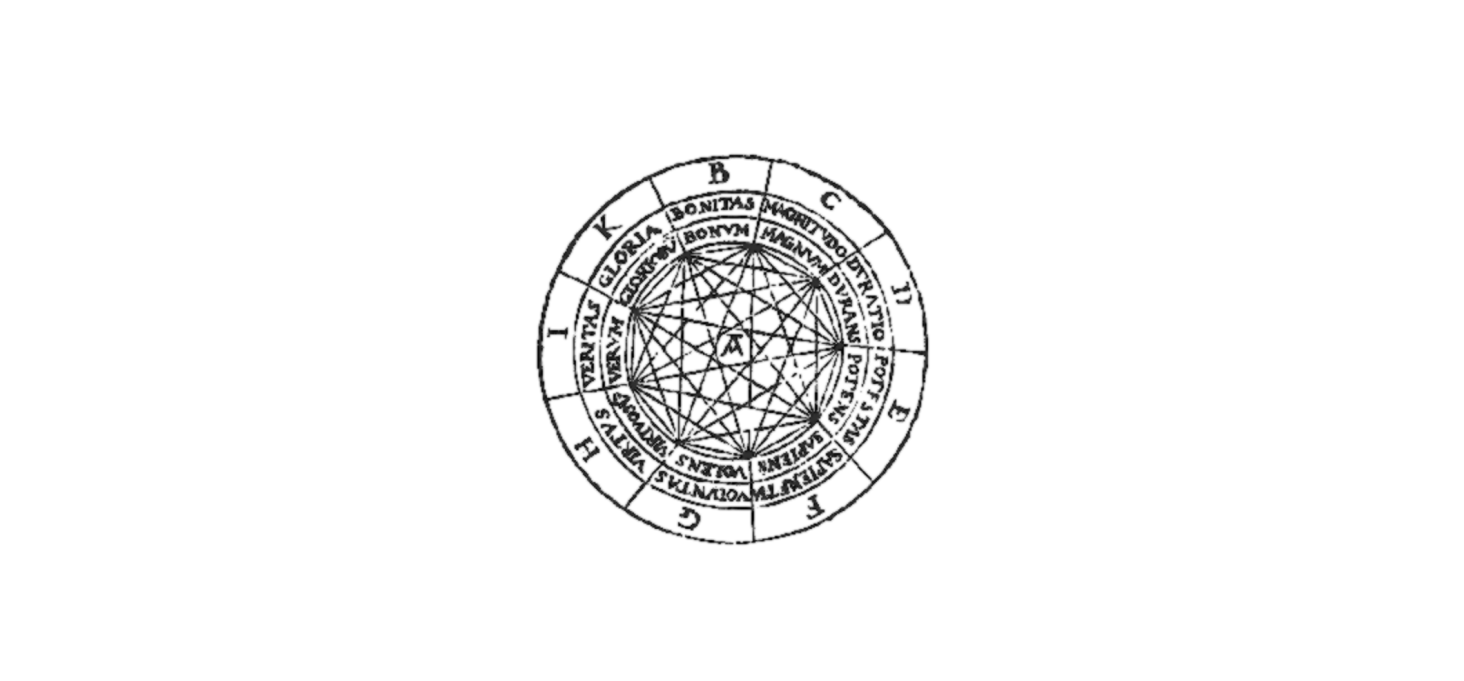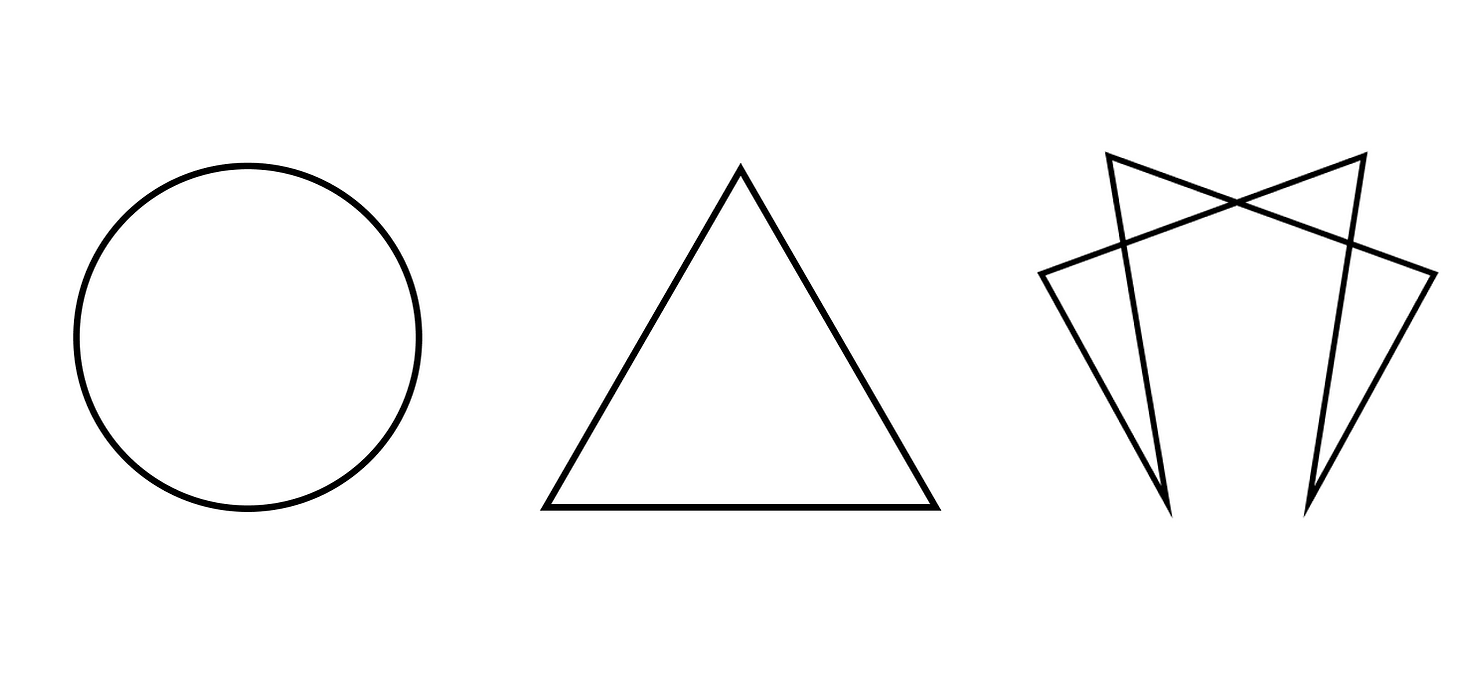
History is hazy about the first recorded use of the Enneagram symbol, suggesting its origin around 2500 B.C. in either Babylon or ancient Greece, and with ties to the philosopher Pythagoras. The visual representation of the Enneagram is a nine-pointed symbol, with each point corresponding to each of the nine personality types and showing relationships between them.
The symbol is composed of three separate figures representing different ideas from geometry, philosophy, and spirituality:
- a circle representing the wholeness and oneness of life
- a triangle representing the interaction of three balanced forces, also known as the Law of Threes
- a hexad, a six-pointed figure with seven points representing the process of change, also known as the Law of Seven, which originated in the Sufi religion

These concepts span the major Western religions of Judaism, Christianity, and Islam in different ways, including the Tree of Life, the Holy Trinity, the trio of affirmation/denial/reconciliation, the three subatomic forces, and the seven days of the week.
These three separate elements combine to form the Enneagram symbol. Together, they symbolize that the path to a more fulfilling life requires more self-analysis and understanding. The Law of Threes is visible in the symbol in three separate triads (Center, Social, and Coping), which further clarify certain types’ behavior and perceptions. The hexad lines represent the idea that movement toward personal growth is always happening, although it’s not always upward; sometimes it takes failing, falling, and rising again.
In 350 AD, theologian and philosopher Evagrius Ponticus formulated eight patterns of evil thought from ancient Greek symbols: anger, pride, vainglory, greed, sadness, gluttony, lust, and acedia (also known as listlessness). Centuries later, Pope Gregory I added envy as the ninth. He also combined vainglory and pride, as well as acadia and sadness, to create the seven deadly sins of Christian tradition that many of us are familiar with today.

Ramon Llull's symbol of moving from vice to virtue
Much later, in the 1100s, Franciscan theologian Ramon Llull expanded upon the original nine sins and developed diagrams that explained how to move from vice to virtue. He adapted the nine vices to avarice, gluttony, lust, pride, accidie, envy, ire, lying, and inconstancy. The corresponding virtues he laid out were justice, prudence, fortitude, temperance, faith, hope, charity, patience, and pity.
In 1875, a Greek-Armenian named George Ivanovich Gurdjieff rediscovered the symbol that resembles the Enneagram today as he explored ancient and lost knowledge, and began conveying its meaning through sacred dances and movements intended to let students holistically experience each of its parts. Gurdjief did not yet apply modern personality theory to the symbol, although he did teach his students about their “chief feature,” an ego-defining characteristic that defines them at their core.
It wasn’t until the 1950s when a Bolivian named Oscar Ichazo, also on a quest across the world to resurface and use forgotten wisdom, linked the concept of the Enneagram symbol to nine distinct personality archetypes. The idea that there are different personality types has existed in Psychology since at least 400 B.C., beginning with the Greek philosopher Hippocrates, and many systems have arisen since then to try to organize people into useful, accurate groups.
Ichazo rediscovered the third-century A.D. philosophy of nine divine characteristics that are reflected in human nature. Ichazo changed inconstancy to fear, and realized the vices and virtues mapped to one dominant pattern of distorted thinking, or “ego fixation,” that characterizes different types of people. He’s widely credited as the creator of modern Enneagram theory.
Ichazo’s work centered on the pure state of the human mind and the ways in which people can lose awareness and their sense of essential essence when they become driven by their ego. According to him, the shift from one’s purest state into the personality that they show the world arises from several factors, including their ego fixations and loss of contact with their own virtue. While every type has the potential to showcase all of the virtues and vices, they have one pair that is central to their identity. Avoiding the loss of this central piece of identity is a primary driver in that person’s thinking and actions. It is the basis for the modern Enneagram’s concepts of basic fear and desire.
In 1970, a psychiatrist specializing in Gestalt therapy named Claudio Naranjo studied with Icazo and learned about the Enneagram. He returned to California to develop a program by grouping individuals who fit certain psychological makeups or disorders, completing extensive interviews and panel discussions with them, and using that data to build out detailed descriptions of the nine Enneagram types.
Naranjo’s teachings spread widely, including reaching Don Riso, who further expanded the details of the types through his own research and added the Levels of Development in 1977. These Levels help explain how although individuals always have the same Enneagram type their whole life, they may shift upward or downward in health and exhibit different traits. Riso published several of the most widely read and respected Enneagram books, including several with his mentee Russ Hudson, who joined the work in 1991. They created one of the most well-known Enneagram questionnaires, the Riso-Hudson Enneagram Type Indicator (RHETI).
Today, the Enneagram is one of the most commonly used personality models in the world, with hundreds of books and guides on the subject and widespread application in businesses, psychology and psychiatry practices, personal development workshops, religious organizations, coaching, pop culture, and more.



